Hens And Chicks Growing Guide
It’s true, that most succulents keep on giving in terms of the cuttings you’ll get, but Hens and Chicks really hit the mark on here. The growth structure of H & C is what allows it to be so plentiful.
The mother plant, which is called the Hen, grows in a rosette form. It sprouts smaller rosettes via lateral stems and these are referred to as the chicks. Chick plants root themselves and grow in an abundance. Just look at the picture and you’ll see tons of babies.
Something to know: there are a few succulent plants that carry this common name of Hens and Chicks.
The Hens and Chicks that I’m referring to in the video below is Echeveria x imbricata, this one is most commonly sold in California. Echeveria elegant is another popular one known as Mexican Rose.
There are many Sempervivums known as Hens and Chicks. For example, Sempervivum tectorum is very popular especially in cooler growing zones because it’s much more cold hardy than the Echeverias. To make this all a bit more of a horticultural head-scratcher, they’re also referred to as Common Houseleek or Houseleek.
How I learned of Hens & Chicks was when I worked at Berkeley Horticultural Nursery in Berkeley, CA. Here the Echeveria is more likely to be known as Hens & Chicks whereas in the East (and perhaps colder parts of the West) the Sempervivum plants are more likely to be referred to as Hens and Chicks. So, this general name refers to how the plant grows and spreads.
Note: This post was originally published on 3/24/2015. It was updated on 9/22/2022 with a lot more information & new photos.
Hens & Chicks Traits & Care
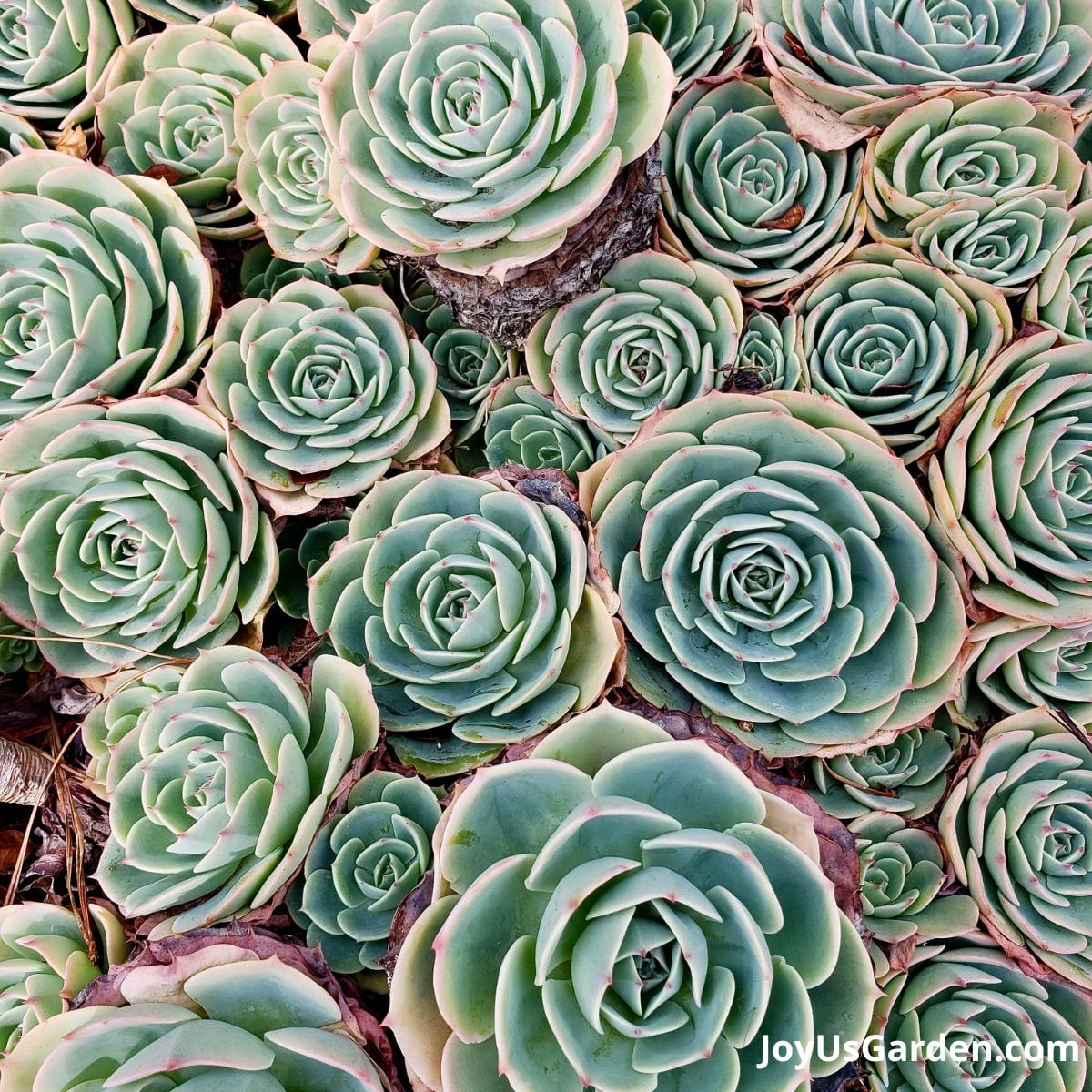
Growth Rate
The growing season for Hens & Chicks is spring and summer. This is when you will see new plants or chicks grow off of the parent plant. They are slow to moderate growers under the right conditions.
Once they reach maturity they need little maintenance. They are low growers usually under 4 inches tall, with rosette diameters ranging from a quarter inch to 10 inches.
Uses
In rock gardens, low bowls, containers, planters, and as ground covers.
Light/Exposure
Hens & Chicks need plenty of outdoor sunlight to thrive and reproduce. If planted in the year-round partial sun they won’t have as vivid of colors. Full sunlight will bring out the colors to a greater extent. However, if you live in a hotter climate, n the summer afternoon shade is preferred.
When grown as houseplants, they need a very bright location (high light but out of direct sunlight) to do well. This has nothing to do with light, but I’ve found that most fleshy succulents that grow indoors will get mealybugs at some point.
Here’s More On How Much Sun Succulents Need
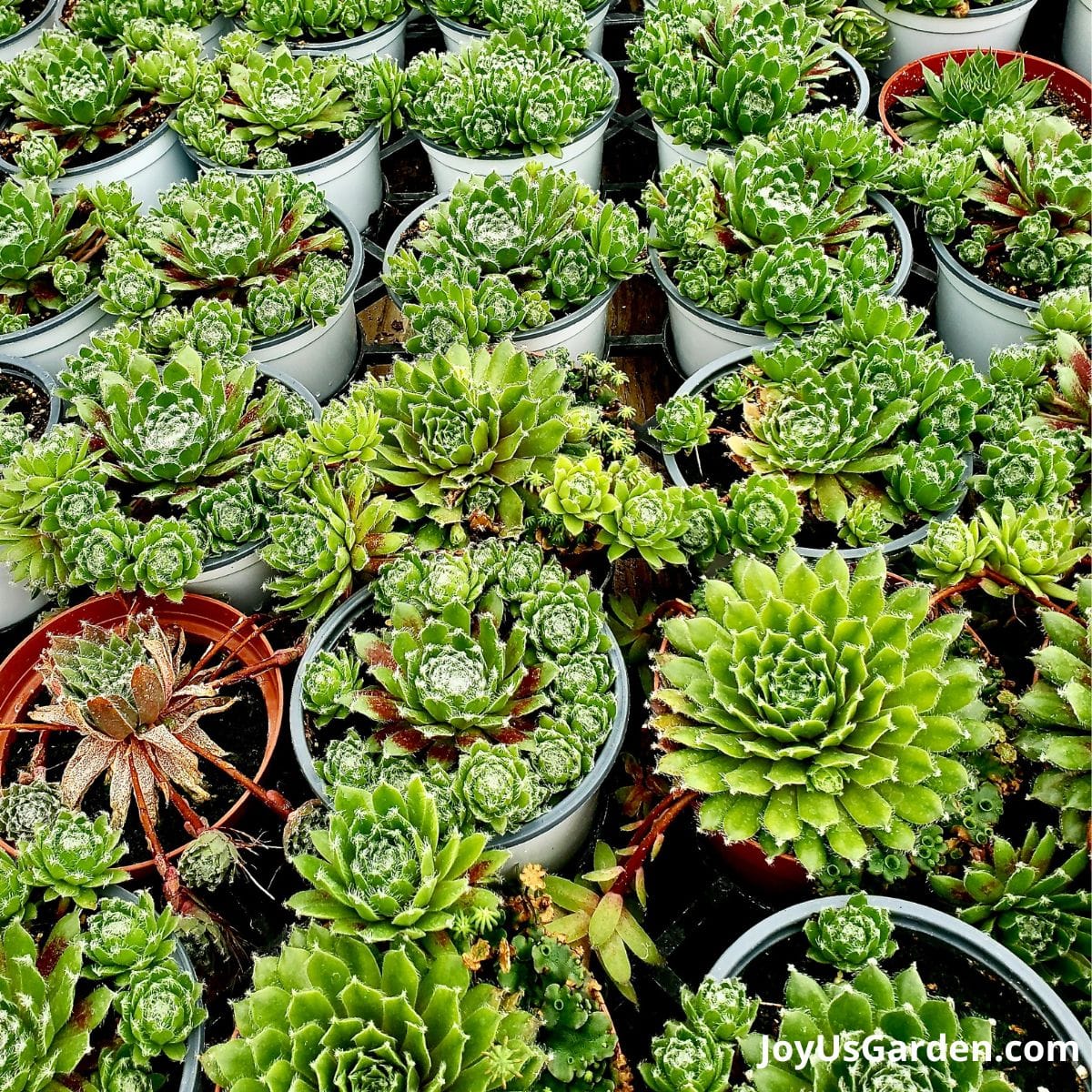
Watering
H & C require little water once they become mature plants. Succulents hold water in their fleshy leaves and are subject to root rot. If yours are outdoors, they may need to be protected from heavy rains depending on what type you’re growing.
Too much moisture and standing water can be the demise of your mother hen and its chicks. In the cooler months when there is less light you will need to cut back on the watering.
Want more tips on watering? Here’s a full guide on How Often You Should Water Your Succulents
Temperature
The plant hardiness zones on the Sempervivum tectorum is a wide range, the USDA hardiness range is 5-10. These succulent plants are known for their resilience to cold temps. These small plants pack a high tolerance in that respect.
The Echeverias generally grow in zones 9 to 11 so are nowhere near as cold tolerant.
You can check out your USDA Hardiness Zone here.
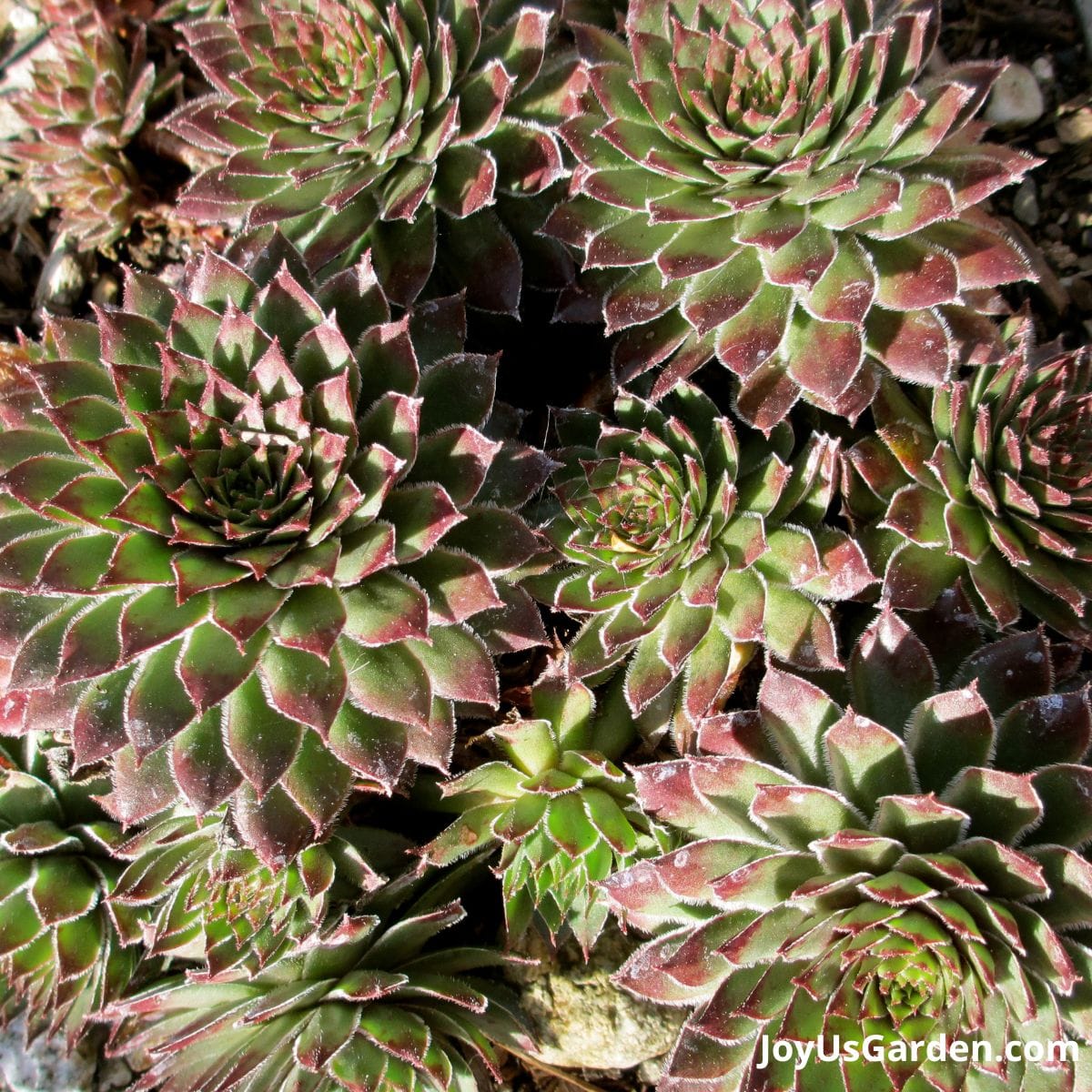
Soil
Like other succulent plants, Hens & Chicks need to grow in fast-draining soils with adequate aeration. The water needs to freely drain through, as having the roots sitting in heavy wet soil will cause root rot.
H & C can survive in poor soil conditions but they won’t look their best. Well-drained soil is a key component to getting the mother rosette to have an abundance of chicks.
It’s best to use a sandy, gravelly, or chunky mix formulated for cactus and succulents, especially when planting in containers.
For almost 3 years now, I’ve been making my own succulent soil mix. You can find the DIY Succulent Soil Recipe here. It’s a fast-draining soil mixture that my outdoor and indoor succulents in pots do very well in.
If you don’t want to make your own, there are plenty of online sources to buy a mix suitable for succulents in containers. Brands I’ve used include Dr. Earth, EB Stone, Bonsai Jack, and Tanks’. Other popular choices are Superfly Bonsai, Cactus Cult, and Hoffman’s.
Fertilizer
I never fed any H & C growing in the ground when I was a professional gardener.
In containers, it was a different story. Feeding should be done 2 or 3 times during the growing season with a balanced fertilizer like Maxsea (which I dilute to 1/2 strength). In colder climates, once a season may be enough.
Propagation
Hens and chicks reproduce offsets/babies through lateral stems. With some, the babies grow off the mother plant and can be removed by pulling them off. With others, I’ve cut them off. Whether you have it indoors or outdoors, it’s easy to take cuttings off the main plant and grow the babies in a new location.
With this prolific plant, you’ll get great returns. The Echeveria cuttings you see in the video at the very end are very pale and elongated (this is called etiolation in the plant world) because I stuck them in my utility room for over 4 months where the winter light was quite subdued. About a month after planting they started greening up.
The babies root on their own so you can cut them off and transplant them if you’d like. Or, you can just leave them be wherever they’re growing. This is how they spread as a groundcover.
Depending on which type of H & C plants you have, they can also be propagated by division or stem cuttings.
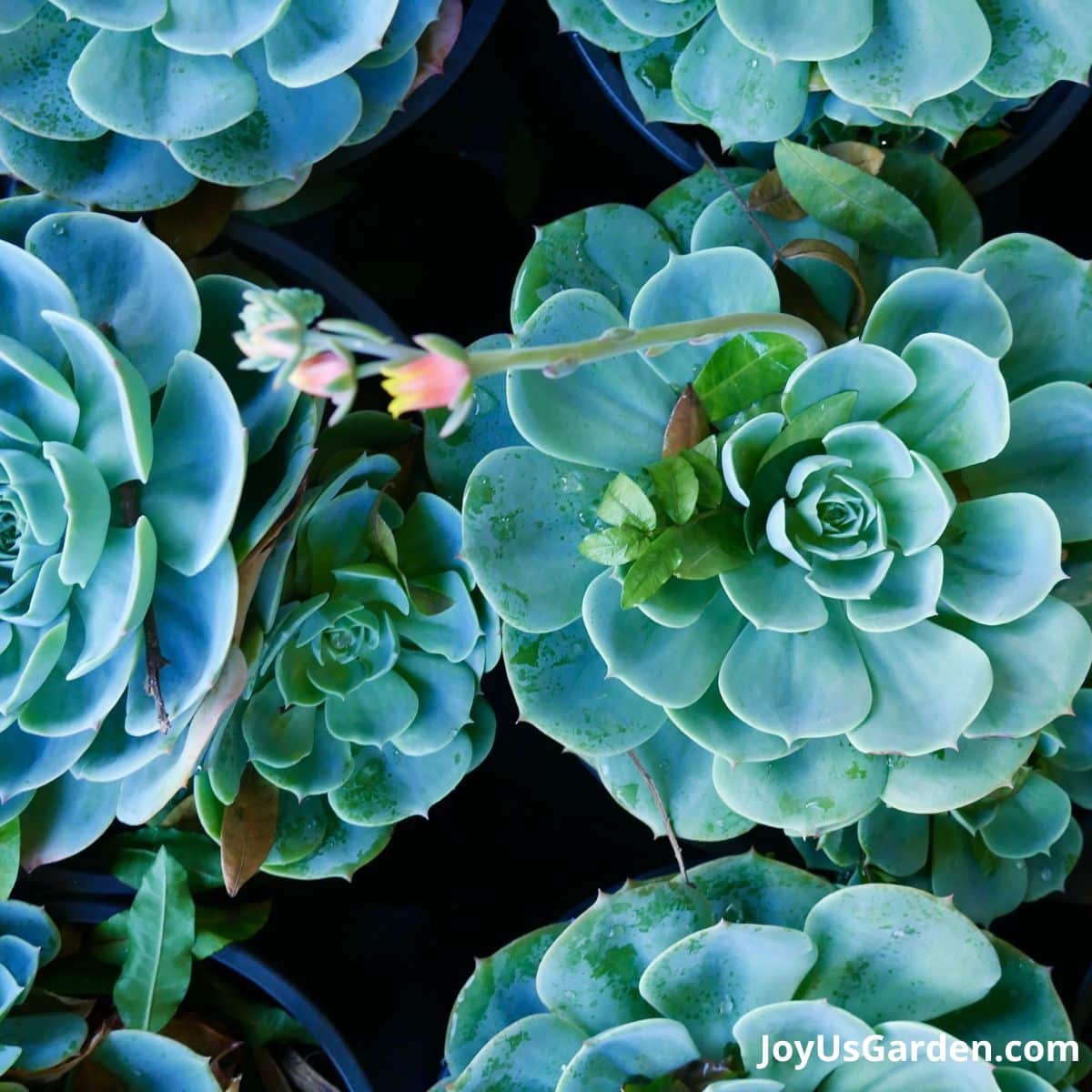
Flowers
Yes, they will eventually flower. Like a bromeliad, the Sempervivum mother plant will die after flowering. Don’t worry though, the young plants (chicks) will continue to grow and carry on the legacy!
The Echeverias, on the other hand, live on after flowering.
Colors
Hens and Chicks come in a variety of colors ranging from reds, pinks, purples, greens, orange, and blue. Colors can change during the seasons, as the summer heat can help produce more vivid colors. The red tips and tips of the leaves of H & C come into full display during the warmer seasons.
The most known Echeveria color is in the gray/blue/green range.
Where To Buy Hens and Chicks

1 Sempervivum “Ali Baba” // 2. Sempervivum “Precious” // 3. Chick Charms Gold Nugget // 4. Echeveria Imbricata
Hens and Chicks FAQs
Yes, they are drought-tolerant perennials.
Hens and Chicks get their name from how they grow and spread. The mother plants have lateral roots that produce offset chicks that spread and form clusters. In a temperate climate, these plentiful offsets have a moderately quick growth rate.
In fact, the plant grows so densely that the outer leaves crowd out the lowest leaves and they eventually die. It’s difficult to even see those brown leaves so I would just leave them be.
The average Hens and Chicks plant will grow to 4-6″ tall and spread to 18-24″ wide.
How to get Hens and Chicks to multiply?
They’ll multiply on their own if grown in the right conditions. They need full sunlight and soil with excellent drainage.
Hens and Chicks are prized for their resilience to cold climates. In particular, Sempervivum, which is its botanical Latin name, translates to “always living”. The cold hardiness zones on some Sempervivums is zones 5-10.
You can leave them be in the winter if in these zones. Echeverias are less cold tolerant and need to be grown in more temperate areas. If growing in a container, you can try bringing them indoors for the winter months.
You can check out your USDA Hardiness Zone here.
They certainly can. Hens and chicks are very popular in rock gardens and the striking colors of the plants amongst rocks are a beautiful contrast.
Yes, they’ll do better growing outside either in the garden or in containers. Sempervivums can certainly be planted outdoors in zones 5 to 10. For Echeverias, it’s zones 9 to 11.
They don’t like to be planted deep. How deep depends on the rootball size. Don’t plant them lower than the crown of the rootball. I leave the rootball up about 1/2″ or so when I plant any succulents because their weight will eventually cause them to sink a bit when settling in. With chicks, I would gently press them into the soil.
Yes, you can plant them in the ground as long as your soil isn’t too heavy and has good drainage. Well-draining soil drainage will prevent root rot, especially in wet winter conditions.
Sandy soil or gravelly soil is what they prefer. Hens and Chicks can survive in poor soils but they won’t look their best.
You sure can. Hens and Chicks make an excellent ground cover. I’ve seen them growing with a mixture of different species/wayvarieties of Hens and Chicks. As the colors intermingle, it makes a beautiful living patchwork.
Hens and Chicks love the sun. But it does depend on the climate as to how much sun is too much. In coastal climates, they can be grown in full sun. However, in Tucson, where I live now, the full sun would be way too harsh.
It depends on your climate. You might not need to supplementally water them if you live in a region with summer rains. They’re known for being drought-resistant perennials and will succumb to wet conditions.
In Santa Barbara, my Echeverias were drip irrigated every 10 days in summer and early fall along with the rest of my garden.
Newly planted Hens and Chicks will need to be watered on a regular basis to get them established.
Hens and Chicks in pots (especially low bowls) will need to be watered every 7-14 days.
The chicks are spread by lateral runners or stems coming off the central rosette. Cut the chick off the stem of the hen plant. With some, the chicks grow almost attached to the mother. Gently pull them off. If they’re really small, you can just lay them on top of the soil.
If the offshoots have more extensive roots, then you can dig into the soil a bit to plant them. Be careful, you don’t want to bury the chick too deep when planting.
Hens & Chicks grow very densely, so I would use some sort of tool to split/divide them. In the past, I have used a trowel or a knife to separate them as carefully as possible.
Sempervivums can take a while to bloom. After they do, the mother plants die. Enjoy the flowers while they’re in bloom and remove the stalks after blooming.
There will be a hole left after the mother dies but you can fill it in with chicks or just wait for them to spread and do it on their own.
I had a patch of Echeverias (the mother doesn’t die after flowering) growing under my Giant Bird of Paradise, and not all of the plants flowered. After the blooms were all spent, I cut the stems all the way off.
Hens & Chicks do great growing in pots. They’re commonly planted in low bowls and clay pots. You might even see them in a strawberry pot spilling out of the planting holes. It’s quite a sight to see!
You want to use a well-drained potting mix formulated for succulents when planting in a container.
Another very popular succulent to grow is Aloe Vera. Here’s a guide to growing Aloe Vera Indoors & Outdoors
Beware – this video is very old! I filmed it soon after joining Youtube but it does have some good info.
The bottom line, once these hens and chick plants get established they practically take care of themselves and require little attention and maintenance. How great!
Happy gardening,
Nell & Cassie
If you’re new to growing succulents, check out our category on Growing Succulents Indoors And Outdoors.
This post may contain affiliate links, you can read our policies here.
- About the Author
- Latest Posts
Nell, the founder of Joy Us garden, was born into a gardening family and grew up in Connecticut’s countryside. After living in Boston, New York, San Francisco, & Santa Barbara, she now calls the Arizona desert home. She studied horticulture & garden design, working in the field all her life. Nell is a gardener, designer, blogger, Youtube creator, & author. She’s been gardening for a very long time & wants to share what she’s learned with you.
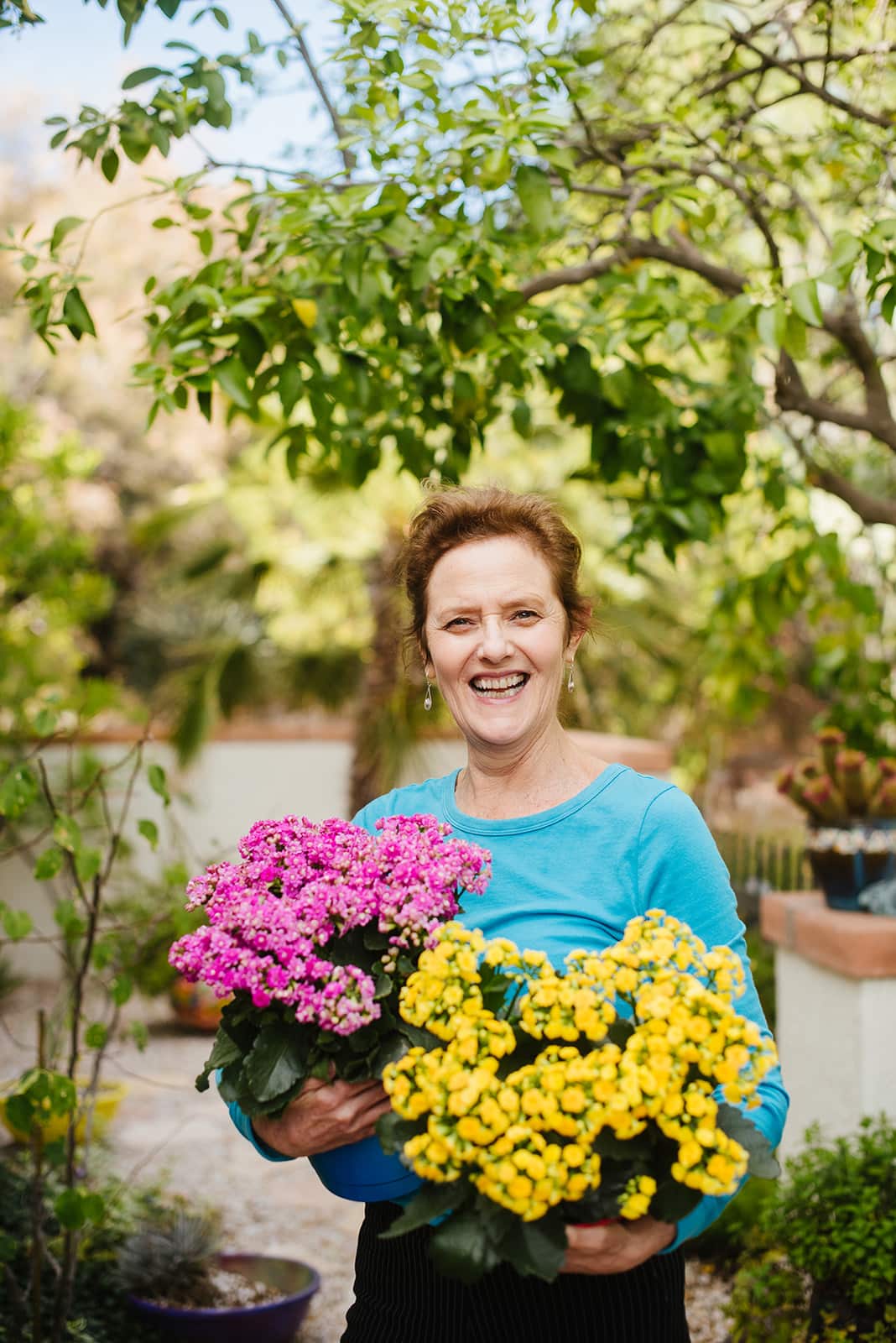
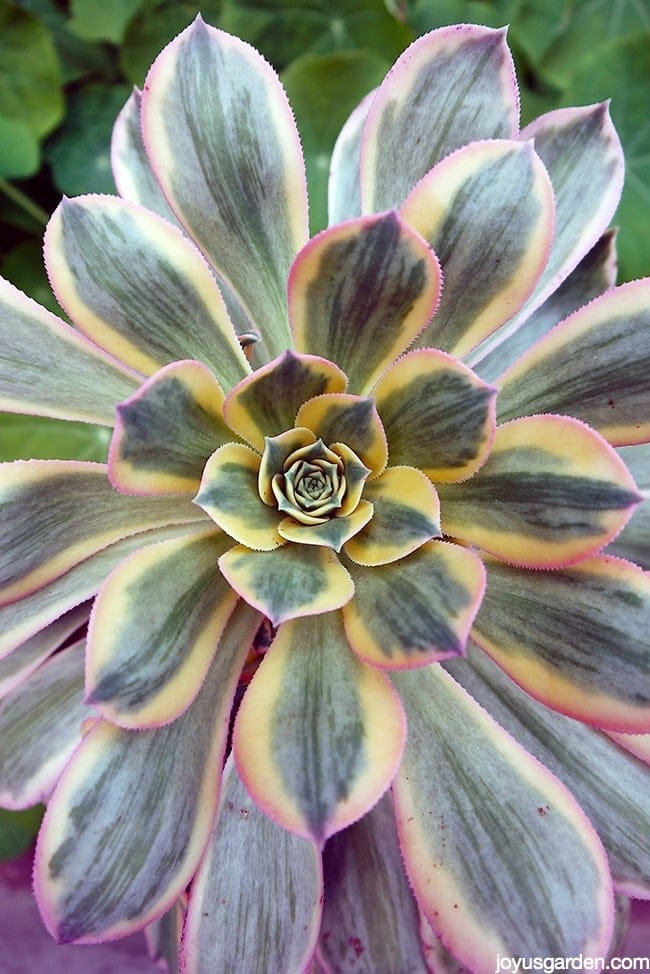
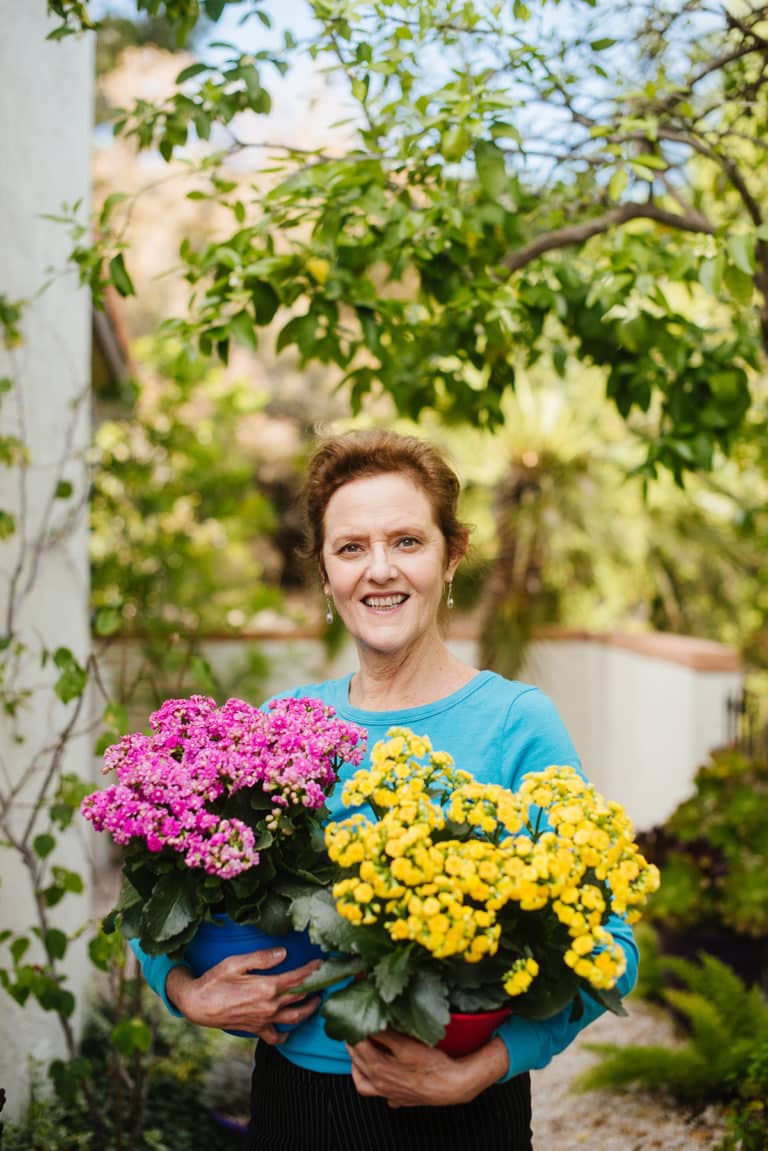
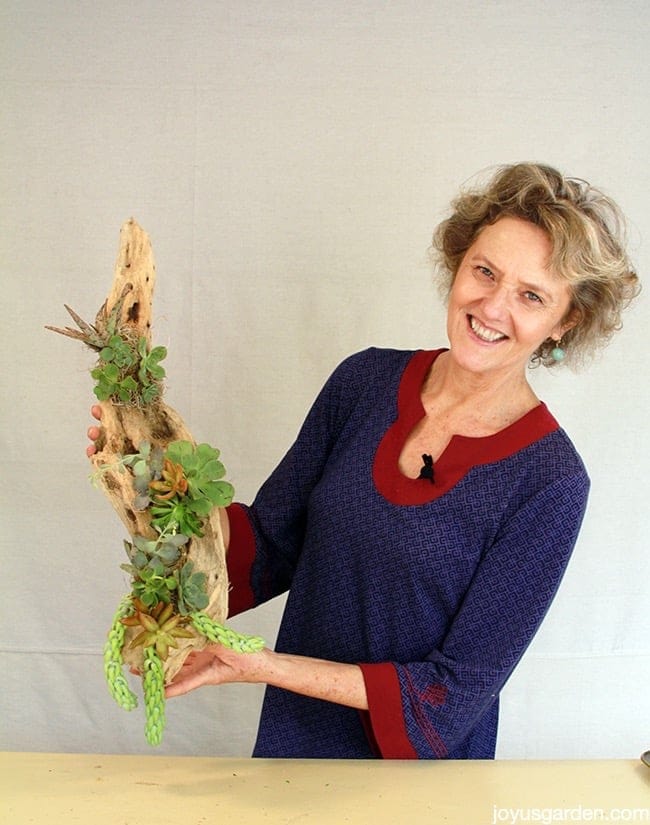
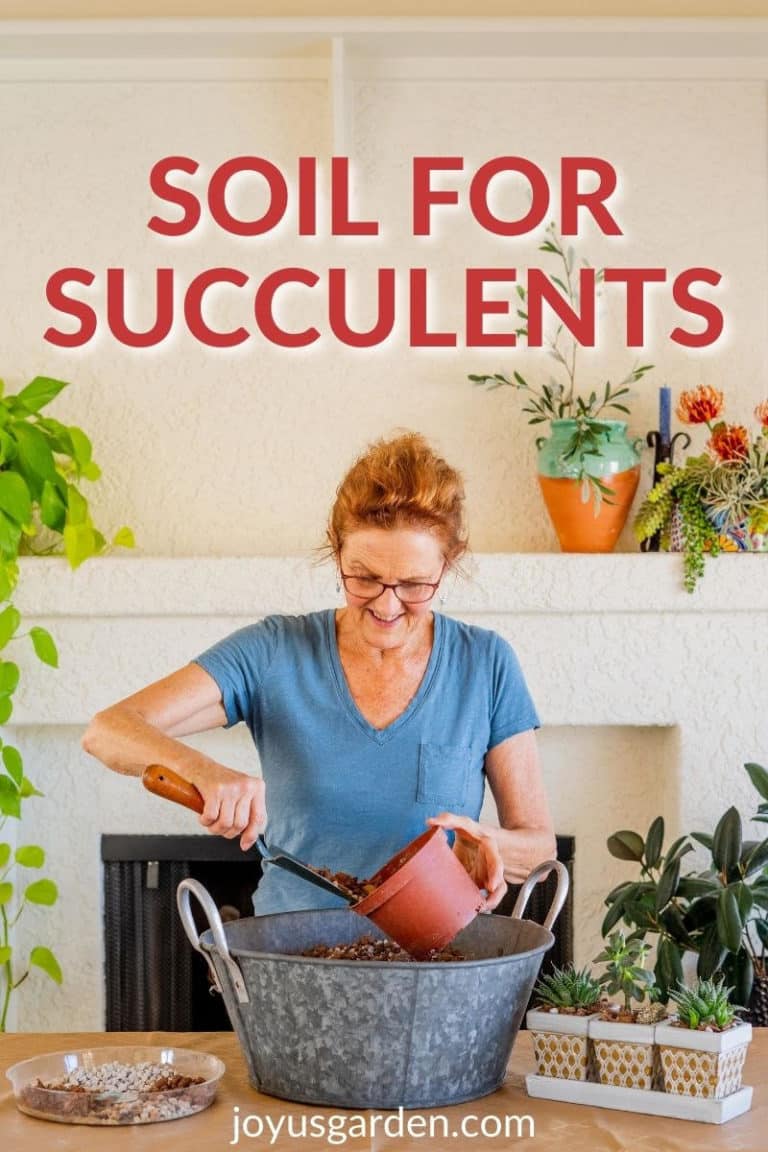

I did not know they were used as house plants!
Carol -If you have lots of light & water them sparingly, they make great houseplants. So easy to maintain! Nell
I have this oneside of the house, that I would love to have for just hen and chuck of differnt colors. What do I have to do to get the right mixer of soil to grow them the right way? I live in Cornville az. The soil is pretty good.What do I get to mix in with it?
Thank you, Jeretta
Hi Jeretta – The most important thing is that succulents need excellent drainage. I’m in coastal southern California but the U of A (they have a good horticulture dept) or a local landscape supply company can better help you out with amending the soil in your area. If succulent are in pots, I always use a succulent & cactus mix with worm castings added in. Here’s a recent vlog I did on how I prepped the soil for my own succulent garden: https://www.joyusgarden.com/soil-for-succulents/ Hope that helps, Nell
Why do my hens and chickens shrivel up? Sometimes I find them laying on their sides with barely any roots left. Other ones get Brown in the middle of their leaves. Any suggestions?
Hi Cherie –
If they’re withering & shriveling & turn brown, sounds like they’re too dry. Nell